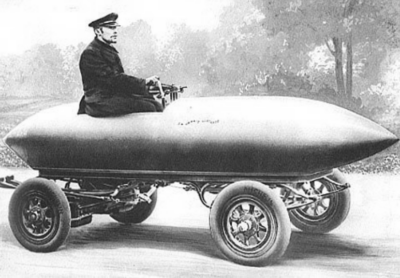Many consider electric mobility as something innovative, almost out of a science-fiction novel or film.
Truth be told, electric cars predate the much more common internal combustion cars since a long time ago.
This is because, considering and comparing their engineering, developing an electric car, requires far less design and components than a petrol- or diesel-fuelled car.
On an electric vehicle, the engine, – or, more precisely, the engines, – must only spin a wheel, using the energy stored in the battery; on the other hand, combustion engines feature many more components than their electric counterparts and must “contain” the explosion following fuel ignition. Therefore, they are heavier and more cumbersome than electric engines.
The first cars were… ELECTRIC!
The electric locomotive
In 1828, Hungarian Ányos Jedlik invented the first, yet rudimentary, electric engine and installed it on a small car he himself had built.
In order to give an historical context, at that time Napoleone Bonaparte had died a mere seven years before and Italy would have remained a fragmented nation for another 33 years.
A few years later, in 1837, Scottish chemist Robert Davidson designed the first electric locomotive ever fuelled by galvanic cells, the batteries of the time. Even if it was somewhat underperforming compared with steam engine locomotives, this was the first instance of a commercial application of electric propulsion.
The first electric cars
However, electric mobility still had a great unknown quantity to contend with at the time: how could energy be effectively stored in order to ensure a suitable driving range for cars?
The answer arrived in 1859, following the invention, by French physicist Gaston Planté, of lead-acid batteries, then improved by his countrymen, Camille Faure, in 1881. These inventors and their breakthroughs allowed the storage of significant quantities of electric power, thus warranting tens of kilometres worth of driving range.
Electric cars did also break many automotive records. In 1899, the first vehicle able to break the 100 km/h barrier was actually an electric one called “Jamais Contente” (literally, never content) by its maker and driver, Camille Jenatzi. This vehicle had a very streamlined shape, resembling a missile, as a result of the first studies on aerodynamics.
The golden age of electric engines
Between the end of the XIX Century and the early 1900s, electric cars became the most common engine vehicles on European streets.
This was made possible as the mass production of petrol- and diesel- fuelled cars by Mr. Ford was yet far to come and a logistical network to recharge electric cars, worthy of admiration even today, was blossoming.
Nonetheless, the problem of recharging stations, still heartfelt in 2019, was a burden on electric mobility even then, more than 100 years ago. So it was that several producers began to offer vehicles featuring quickly replaceable batteries (a concept now reviving in the Fiat Centoventi concept car).

Already since 1896, the Hartford Electric Light Company offered a service by which owners could, paying a monthly fee, substitute their exhausted batteries with newly charged ones when visiting company stations. So much for car sharing!
Also, electric cars were used by the taxi services in many cities, such as Paris, used electric cars and the latter were co-existed together with petrol-fueled cars and horse-drawn coachess. And in London, here called “hummingbirds” because of the rustling noise coming from their electric engines.
The decline of electric engines

Following the mass industrialization of the automotive sector and the achievement of assembly-line production plants, car producers began to offer competitively priced petrol-fuelled cars.
More, as every day, new oil fields were discovered, in the most remote corners of the world, this allowed to have low-cost fuel during a period when, as cities and factories began to use electric power, the price of electricity kept on spiking.
Ford, Daimler-Benz, and many other, still existing, companies, became the forebearers of a mass mobility which, for logistics- and production-based reasons, chose internal combustion, rather than electric propulsion.
At the end, we should take notice that – while electric mobility is nowadays discussed as an emerging topic, is by no means “revolutionary” yet rather an idea “resurfacing” from the past, in times when benefits connected with electric engines could finally be appreciated in their full display.
ALESSANDRO BIANCHI MAIOCCHI
Translated by Antonio Enrico Buonocore











